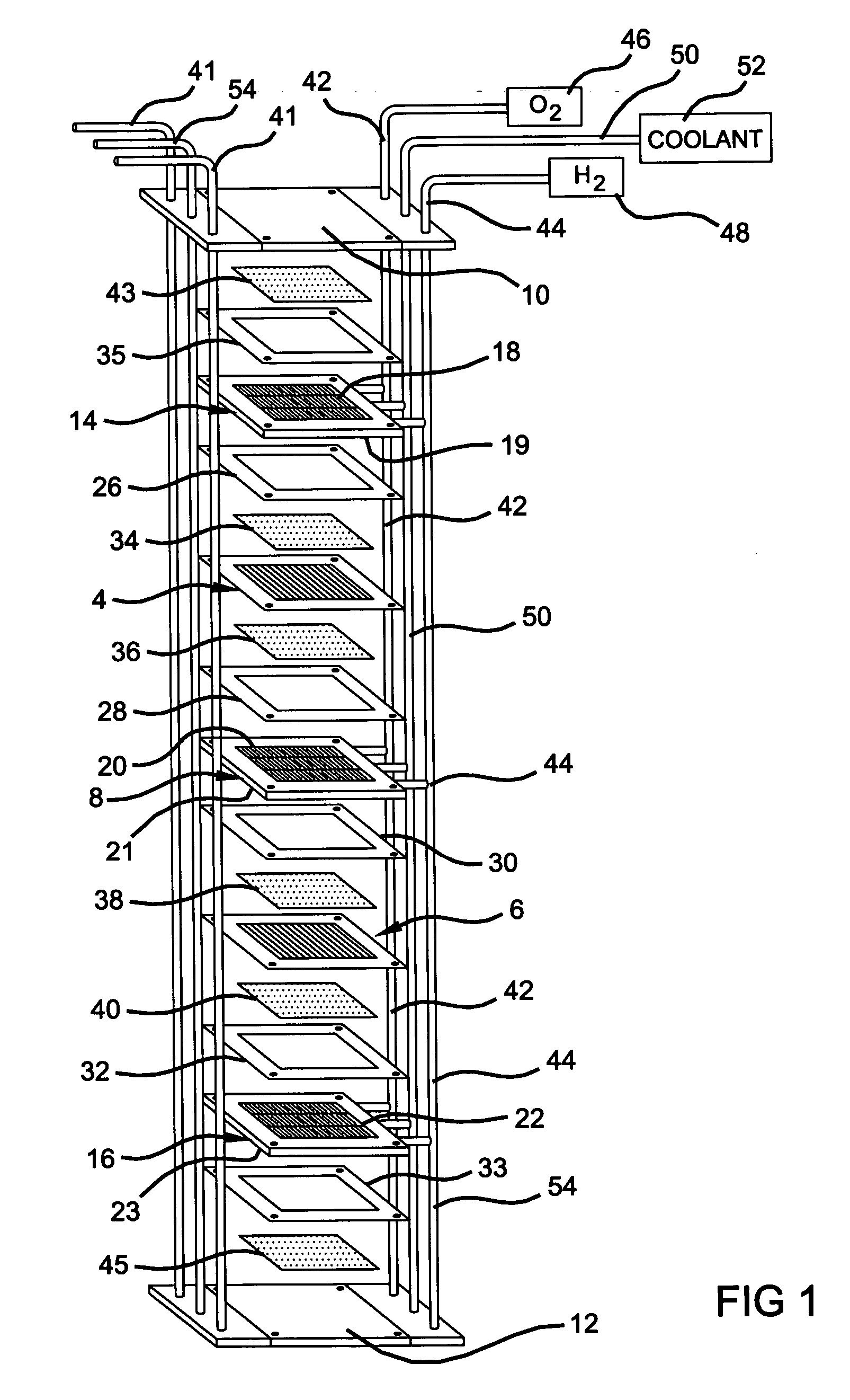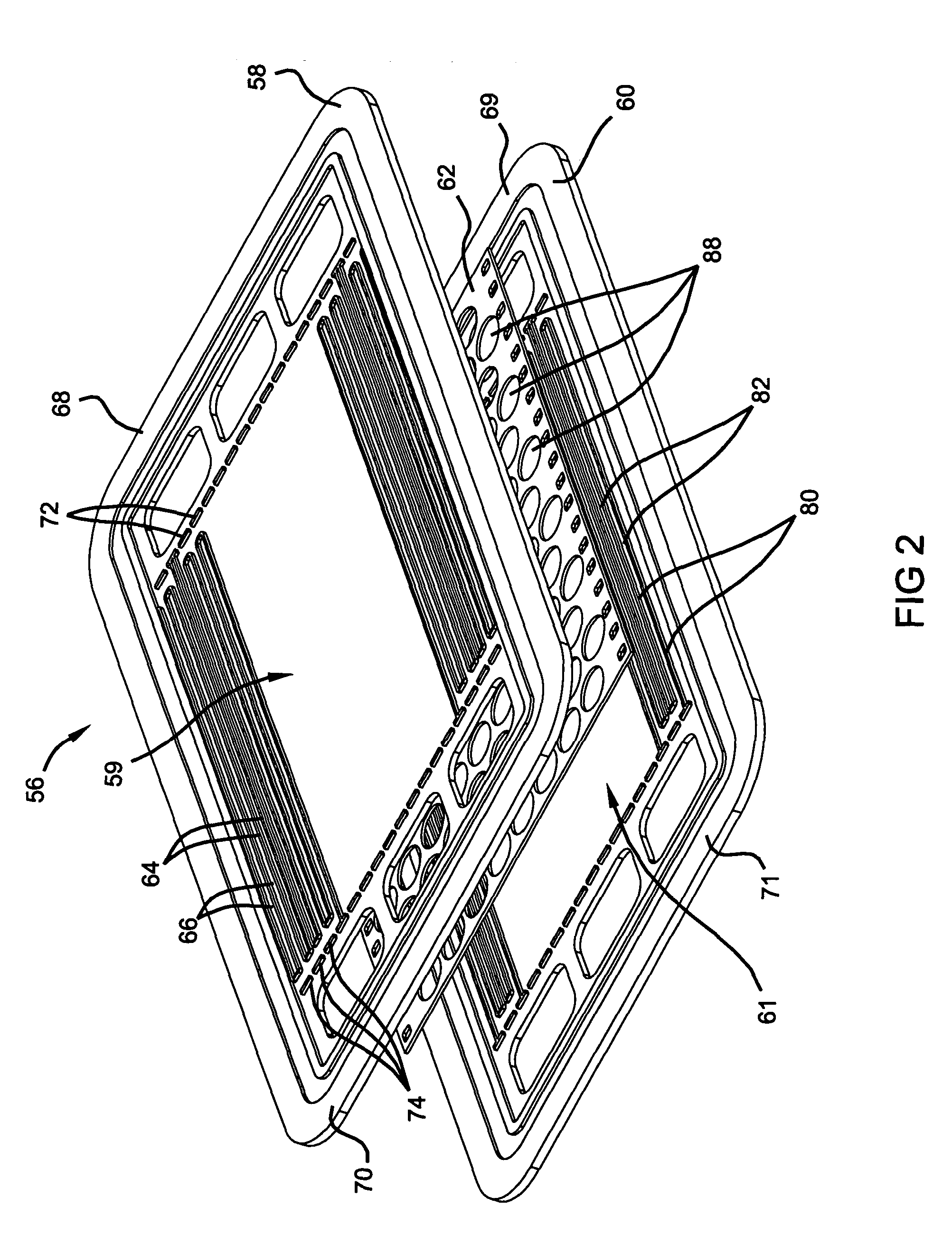Composition and method for surface treatment of oxidized metal
a technology of oxidized metal and composition, applied in the preparation of detergent mixture compositions, electrochemical generators, inorganic non-surface active detergent compositions, etc., can solve the problems of reducing the performance increasing the internal resistance of the fuel cell,
- Summary
- Abstract
- Description
- Claims
- Application Information
AI Technical Summary
Benefits of technology
Problems solved by technology
Method used
Image
Examples
example 1
[0063] An electrically conductive element according to a preferred embodiment of the present invention is prepared by providing stainless steel strips samples measuring approximately 31 cm×18 cm×0.02 cm. The stainless steel is Type 316L, cold rolled, bright annealed, strip, UNS S31603 in accordance with ASTM A480 from Arcelor, S.A. located in Grand-Duché, Luxembourg. The steel substrate is pre-cleaned by spraying an alkaline cleaning solution of PARCO® Clean 1200 (an alkaline cleaner with a builder constituent comprising potassium hydroxide and tetrapotassium pyrophosphate) at 5 wt % and 95 wt % deionized water for 10 seconds at 71° C. A deionized water rinse is sprayed onto the surface to remove any residual alkaline cleaning solution.
[0064] An acidic treatment solution is prepared by admixing 3 wt % sulfuric acid solution; 97 wt % deionized water solvent; and 284 ppm of HF. The sulfuric acid can be purchased as Ridolene® 123, available from Henkel Surface Technologies of Madison ...
example 2
[0066] An electrically conductive element prepared according to an alternate preferred embodiment of the present invention is prepared by providing the same stainless steel strips samples as those in Example 1. The steel substrate is pre-cleaned with the same alkaline cleaning solution and rinse solution as in Example 1.
[0067] An acidic treatment solution is prepared by admixing 3 wt % sulfuric acid solution; 97 wt % deionized water solvent; and 568 ppm of HF. The sulfuric acid is provided as Ridolene® 123, as used in Example 1. The hydrofluoric acid can be purchased from VWR Scientific Products Inc. The acidic treatment solution is sprayed on the steel substrate surface for 10 seconds at 66° C. to activate the surface and remove metal oxides. The steel substrate is then rinsed, dried, and coated in the same manner as the conductive element described in Example 1.
example 3
[0068] An electrically conductive element prepared according to another alternate preferred embodiment of the present invention is prepared by providing the same stainless steel strips samples as those described in Example 1. The steel substrate is pre-cleaned at the same conditions with the same alkaline cleaning solution and rinse solution as in Example 1.
[0069] An acidic treatment solution is prepared by admixing 3 wt % sulfuric acid solution and 97 wt % deionized water solvent. The sulfuric acid is provided as Ridolene® 123, as used in Example 1. The acidic treatment solution is sprayed on the steel substrate surface for 10 seconds at 66° C. to activate the surface and remove metal oxides. The steel substrate is then rinsed, dried, and coated in the same manner as the conductive element described in Example 1.
[0070] Immediately after the application of acidic treatment solution and before the protective coating in Examples 1, 2, and 3, the contact resistance measurements of th...
PUM
| Property | Measurement | Unit |
|---|---|---|
| Temperature | aaaaa | aaaaa |
| Temperature | aaaaa | aaaaa |
| Time | aaaaa | aaaaa |
Abstract
Description
Claims
Application Information
 Login to View More
Login to View More - R&D
- Intellectual Property
- Life Sciences
- Materials
- Tech Scout
- Unparalleled Data Quality
- Higher Quality Content
- 60% Fewer Hallucinations
Browse by: Latest US Patents, China's latest patents, Technical Efficacy Thesaurus, Application Domain, Technology Topic, Popular Technical Reports.
© 2025 PatSnap. All rights reserved.Legal|Privacy policy|Modern Slavery Act Transparency Statement|Sitemap|About US| Contact US: help@patsnap.com



